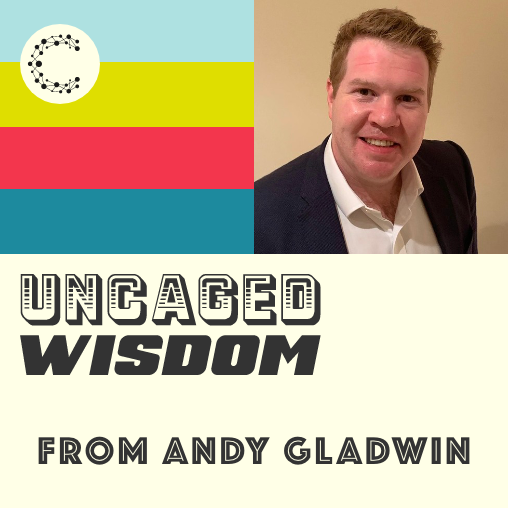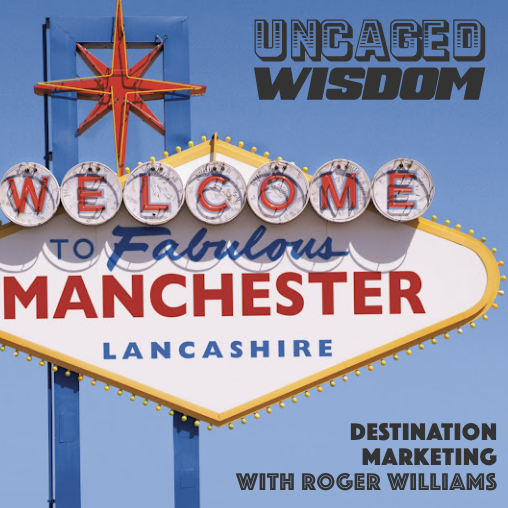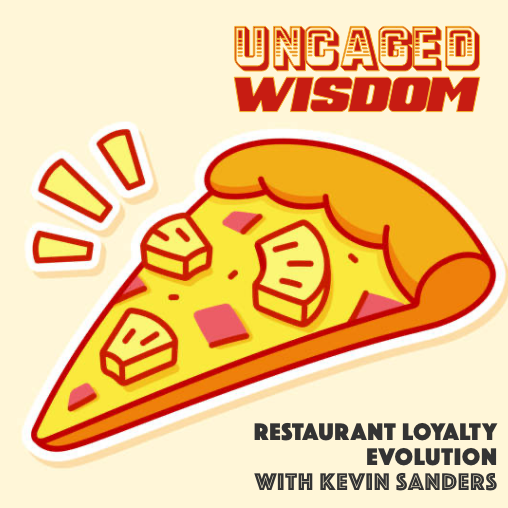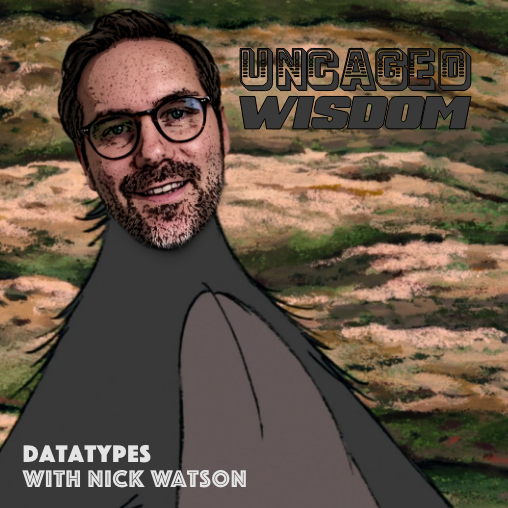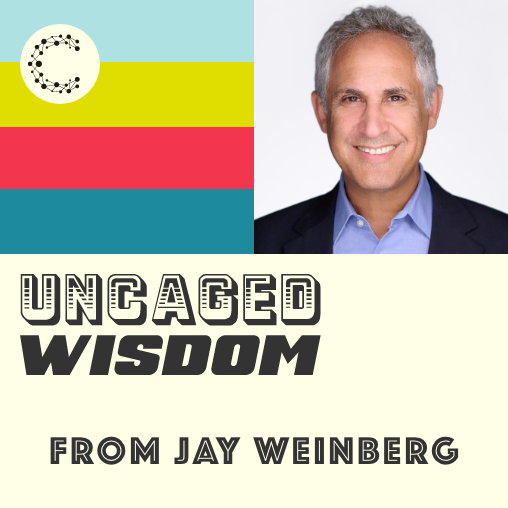The Importance of Mobile Marketing w/ Andy Gladwin
- 0.5
- 1
- 1.25
- 1.5
- 1.75
- 2
Julian: It's post- lunch, full belly, and it's Thursday, so not far to the weekend.
Speaker 2: Uncaged Wisdom, Cheetah Digital's podcast for modern marketing.
Julian: Andy Gladwin, Head of Mobile Go- to- Market at Cheetah Digital. Thank you for joining just me today. How are you?
Andy Gladwin: I am good, Julian. Great to be here. How are you?
Julian: Always living the dream. We are talking all things mobile today. How do you set up your role at Cheetah Digital and the importance that mobile plays?
Andy Gladwin: So my role really is to go and understand what's going on in the market in terms of some of the major themes that mobile can offer. And then really try to relay that in how we present that and package it for our customers, to try and drive value for their business. And mobile for us at Cheetah is SMS, MMS, push, Line in Japan, and mobile wallet. So really looking across all those channels to look at best practice and ways in which our customers can best benefit from engaging with theirs.
Julian: When you are going to our clients or prospects, how often is mobile on their mind?
Andy Gladwin: It really varies by company, and geography as well. So if we look at North America, I would say that right now there has been a huge emphasis over the last five years on SMS. And that probably was there before in Europe and APAC, which I'd say is more advanced in terms of their adoption outside of promotional messaging, for notification, traffic, and others. I think that globally at the same time, apps and push notifications and in- app engagement has grown uniformly across different regions. And then there are some products like Line, which is much more regional in its nature. So where there's an adoption of people using a social channel like Line, which is Japanese version of a WhatsApp or a Facebook or a Viber, so they're a social messaging app. That we see we, obviously, advance there and very few people using it outside of their territories where there's adoption. The other one I'd say is really mobile wallet, which has changed more recently, obviously with the climate we're in right now, whereby it provides a contactless environment. And when people are much more cognizant of hygiene in a post- pandemic, current pandemic world, I think that that's only going to continue. And so as an alternative to an app, it's a great place for you to be having a window to value and being able to redeem things through that environment globally. When you go into the room, what's the first question? I'd say that when I started my career, it's, why mobile? And now it's very much a how. They understand the value, but how can they actually make a success of it and how can they drive value from it? So there are different levels of maturity, but certainly there's a uniform ambition in terms of trying to find out how they can bring this into their overall digital marketing strategies.
Julian: What was your first mobile device?
Andy Gladwin: A Nokia 3210. It was incredible for Snake. And that came after I had a pager, which was, at the time, I thought one of the coolest things in the world. In hindsight, unless you're a doctor, it really doesn't carry. I don't know why that's not become retro and something that people have again, but yeah.
Julian: Nokia, man? You got to stay relevant, haven't you?
Andy Gladwin: Single charger that would work wherever you went. Everyone had a Nokia and batteries would last for days. The glory days of mobile in terms of it being functional rather than an extension of your life and capabilities.
Speaker 4: Hello! Yeah. Yeah. I'm in the library, yeah. You know, you're cracking up. You're in the dark. Yeah. No, I can't talk, I'm in the library for Christ's sake! Yeah! Sure!
Julian: To your point you made a minute ago, both individuals and brands and companies, they're all very familiar with the importance of having a mobile and SMS and push notification driven strategy. But why, again, should people be bothering with SMS, which feels like something that's not quite the brick phone, but certainly from the late nineties, early naughties of technology? Why of all the things, of the shiny objects we have, why inaudible is this such an important avenue to go down?
Andy Gladwin: So I think that when you look at mobile, it's literally, it's an extension of oneself. It's always there with people. They're always on. And with that, we can talk about it maybe later around how that reason can be quite invasive, as it's such a personal device that is literally monitoring your health, that you are interacting with your voice on, and then you're running your agenda, your work, your social all through this device that's always at arms length way. But going with that, there are so many different, exciting, emerging channels that are coming through and ways in which is being used, and you ask a good question. Yeah, SMS. It was developed, I think first message in 1992, December the 3rd. So coming up for its 30th birthday party. Hopefully I'll be invited some nerdy party somewhere on that day. If not, I'll host, ensure I get an invite. But why is it still going? What's the value in it? And the value for me is the engagement. When you look at the mobile ownership in the majority of companies that at least our clients work in, and globally, for that matter, it's very high when you compare it to other penetration rates of different channels. And so North America, UK, Australia, it's all above 100% mobile ownership. And SMS is native. You don't need to have a smartphone. You don't need to have 4G. You don't need to have WiFi. You don't need to download an app for it to work. It just operates on any handset. And so that gives you ubiquity in terms of an addressable audience. But then once you have that, one of the next differentiators is the highest certainty of something being read in a short period of time comes with SMS. 90% of messages are read in 90 seconds. So with that, you can be incredibly forensic in terms of when you send messages to ensure that they arrive at the times of relevance and context. And when they do, then there's a 19% click- through rate, or up to 19%. For some use cases, it's around seven to 9%, but for links, it's up to 19% where personalized and promoted well. And then where there's a call to action for a response, it's around 45%. So you're an organization, you're saying," I want to send a message out whereby I can get to all of my customers, do it with a high level of confidence in a short period of time, and have a technology that is familiar for a 14- year- old as it is for an 85- year- old." I think that there's little in terms of other alternatives that can provide the same value in that space.
Julian: If you're a marketer who maybe predominantly provides an email, you might be thinking to yourself, well, I invest a lot of money in my email program and it's working for me. And I know SMS isn't free. I know not only the cost are creating and sending and actually keep running a program. Is it worth the investment?
Andy Gladwin: It's absolutely complimentary. And you think about customers, they may have preferences, saying they only want to be communicated to through email or SMS or push, whatever their channel of preference might be. But they might also decide that if they have... Let's look at banking. I want to have updates in my terms and conditions sent to me by email, because I want to read through that. There's a lot of information. That's probably going to be the right form, and it's something that isn't time pressing. But if I have a two- factor authentication code, or if I have a fraud alert, I damn sure want to have that sent to me as quickly as possible to mitigate risk, or to have a frictionless experience in getting access to my account. So that's examples where it's not displacing other channels, it's different use cases. Different audiences will have different preferences. And they can be used to compliment one another. You could have people texting in their email address in an environment whereby they're enrolling to email by texting a short code when they're in a different environment. So the two work side by side. And I say the two work side by side, we'll talk a bit about data later on, maybe, but the way in which customers operate, they don't engage with channels. They engage with the brand. And so when you're looking at, should we do email or SMS? Don't alienate your customer by saying," We only operate down one of these channels." They may have habitual and preferred channels, which reside in different environments. And ultimately, it's trying to find out what use cases and where you offer those to cover cost versus covering all bases. But there are certainly some use cases which really stand out and have a proven ROI where SMS, yes, is more expensive per message, but in terms of the return, is much more fruitful to organizations when executing those.( singing)
Julian: Andy, let's go through some more practical thinking and building, some initial thoughts on strategy and some other areas of consideration around building a program like this. So let's start with acquisition. How do I get people to exchange some information, and most importantly, their number with me?
Andy Gladwin: Good question. And the most horrible answer I give, but it's my most common answer is it all starts with actually providing value. And so if there's something that isn't compelling for the customer to be opting- in to, it's not around how can we get their consent, as something that we can send the message, is when the gateway to give their consent and opt- in isn't sufficiently appealing for them to choose to do so. So the first thing resides with the brands themselves in working out what is it that you are offering? Is it additional convenience? Are you going to help them in terms of how they engage with you to make it a better and friction- free environment? Is it something where you're providing value? This is going to give you exclusive content. It's going to give you promotions where you might get a discount. So understanding what is that value and making it explicit is part one. Part two of the value is then going," I'm already potentially on the email distribution list. What's the benefit of being on SMS and emails? It's just more noise." So it's something careful to work out. Are you trying to... What is the reason for a customer to opt- in to different channels? It may be that they say, well, they opted- in through email because they saw that first, but actually SMS worked better for them because they want to have it on the fly, easy access in their pocket. But then working out if you want them to be on both channels for whatever purpose it might be. Is it," For 10% off you get email. For an additional 5% off, enroll in our SMS program as well." And so there's an actual additional benefit to being part of multiple channels. So some tactics there in terms of how it can work on kind of a crude promotional basis. But then, when looking at it, I think that mobile has again a great place whereby if you are looking for people to join a campaign, that they've said yes, they want value. Yes, you believe that what you are offering is something that's going to be compelling to them. So how do you get them to join? The way in which you're going to get them to join is by reaching out to them when they are a captive audience, when it's front of mind. So what does that actually mean? Let's take a quick serve restaurant as an example. When are they thinking about joining a program to get a discount, to join a loyalty scheme? One of the moments that they're captively thinking about that restaurant is going to be when they are queuing. So have a short code to text into as they're queuing. It's going to be when they are going in the drive- through, and they're waiting. Give them the opportunity to enroll whilst waiting, so it's not lost time, but they're gaining value while sat there. Are they eating in the car park? And if so, make the ability for them to have exposure to that value in the window of the restaurant where they can text in from there. Is there something from digital position that you want to have on your website? At the bottom of your emails? Is this going to be on your receipts? It's understanding where are people thinking about you as a brand and how can you make sure that there is a gateway for them to access that value in these moments of time to actually inspire their ability to move through that gateway. So for me, it's understanding where are those moments of inspiration. Going back to quick serve restaurants. What item do you think is most effective for brands to be putting a gateway on, a QR code, or a short code people to text into? If you have a sit- down restaurant, on the menu itself. But for environments where people are taking packaging away from the premise, on the drink. Every time the drink. The drink is the last thing that stays with you. You go and get your lunch, you take the drink back with you in the car, you put it on your desk when you get back home or in the office, others might see it and go,"Ah, I fancy..." whatever off the back of it," Can I also join that program?" But that is your best moving opportunity of a gateway that others could be influenced by going forward.
Julian: You mentioned restaurants there, but is there anything you're like," That's a home run there. I can't believe no one's done this yet in this industry"? I'm just curious about your other industry opinions, really.
Andy Gladwin: I think that there are five use cases that SMS delivers that really stand out from an ROI perspective. So just going on in terms of value for an organization where they're thinking about, we're getting started here, we have numbers, we have consent, but where should we actually operationally use it as well as from a promotional perspective? So from a promotion perspective, there's going to be some variety depending on the order of good that you are promoting. And obviously, how that's served in terms of time of day and the personalization and the audience that it's going to, but you generally expect a two to 8% conversion on promotions with SMS. But if you look at delivery notifications, so during the recent period with huge home deliveries while the world's been locked down, SMS has grown 20% year- on- year, organically. That's Mobilesquared research. And part of that reason is just everything's going digital, but SMS has been central to deliveries. And so with that, the chances of a missed delivery are reduced by 15 to 35% when using SMS as part of that. And so we talk about that for retail is absolutely essential, because the cost of missed delivery, to organize it again and come back. Customers don't order things because they're chancing whether they'll be in or not, they order them because they want them. And so it's better for customer satisfaction as well as operational savings there. Appointment reminders, again, massive. So whether that's getting your haircut or for a lunch reservation, it can reduce it by 10 to 30% by sending out SMS reminders there. And then finally customer service, which the traditional figures are 10 to 20% ROI in terms of reducing cost to a customer contact center. It reduces the number of inbound calls by 10 to 20% when using SMS. And what would an example of that be? Let's take the airline industry. There has been a storm over Dallas- Fort Worth. And you are going to the airport there. All flights are canceled. What do you do next? And let's say that you're in a connecting flight, you get this message and you're in San Francisco. That's where most people will be calling up whoever the airline company is and trying to find out what they do from there. But providing the ability to self serve, to provide information, can have substantial amounts of savings to organizations. And utilities as well, texting your gas meter reading rather than having someone come to your house to go and check it. The savings of operational costs for organizations could be massive. When you look at COVID, one of the biggest use cases has been providing clarity in periods of complete ambiguity. And comfort as much as clarity. So people who may be vulnerable, people who just may be very conscious of the risks, and saying," I'm going to go to my local supermarket." And the supermarkets, we have an example of this with a large supermarket client in France, send out a message to all of their customers saying," Here are the latest rules and regulations. When you come into our supermarket, masks will be required. There'll be sanitizers on entry." But just making it much more of an informed journey for people who could be in a position of concern. And where clarity isn't provided, potentially choose a home delivery where they have an alternate supply had a better slot for them, rather than having the comfort to go to a more familiar brand because they've been served well. And that ends up being a differentiator, by better catering and informing customers just from how you interact with them versus competitors.
Speaker 5: Because the mail never stops. It just keeps coming and coming and coming. There's never a let- up, it's relentless. Every day it piles up more and more and more. And you got to get it out, but the more you get out, the more it keeps coming in. And then the barcode reader breaks! And then it's Publishers Clearing House Day!
Speaker 6: All right! All right! All right!
Julian: How does the mobile data work with the other channels?
Andy Gladwin: So I think it's really important to try and break down silos. Sorry to go down a very well- trodden track in terms of a verse here, but genuinely, as I said before, customers have a single relationship with a brand. And what do I mean by that? I mean that they expect to be understood. And they expect that brands listen and observe what they have done in one environment and continue to serve them in any other environment, from the same brand. And so continuity is of incredible importance in terms of an impact to a customer. With the data itself, you collect the data from all the different digital touchpoints that you have. And with those, you're going to be able to provide a much more contextual and relevant message that in theory should have more impact and more value when you're assessing where is a customer right now in terms of their attitude, in terms of their... Whatever criteria, whether it's buying, whether it's traveling, whether it's getting home in a taxi, what are they doing right now? What's the latest information we have in which we can understand, how do we best engage with them? What's the right time to engage? And over what channel? Now, part of that decisioning is going to be based on what are the last activities we saw with mobile and information that we received there, and did they receive a message we sent? Or," Oh, we sent a fraud alert, but we didn't get the handset delivery confirmation. And so having not had that over whatever duration, let's now try another channel." So receiving information like that from quite a critical perspective and understanding how do you process that to ensure you're continuing to deliver the best service to a customer in a moment of anxiety. But then you look at the other data that mobile can provide itself. So when we look at apps, and they're very unique in terms of being able to offer location data, you can see recency and frequency. And with this, you start to be able to understand, should we be engaging with a customer who keeps on coming back to our app with great frequency, going to the same areas, and promote... Are they constantly looking at summer holidays rather than winter holidays? How do we now send our promotions around it to make sure that we aren't ignoring where they're showing that they're waiting and preference, but in providing them with the right service level in the right direction. But let's cater for them with potential loyalty programs where they keep on coming back. But for those where we haven't seen them in a while, this are a risk of churn. And churn is fine. If there is a customer who doesn't want to be with you, then use it as a learning opportunity and try and gain feedback. But if it's a customer who's having difficulty using that channel, maybe it's a way to find out, let's starts to cater for them down a different channel, which is better for them in terms of a preference. And also, let's highlight the value, in case they are struggling to get access to the value or understanding what the value is. Make sure that it's explicit to them. The way in which all of this works is customers have a single relationship with brands and the nirvana state is one to be able to have total and present understanding of a customer before making any engagement decisions based on content, channel, timing, et cetera, in order to have the most impactful contextual messages that, in theory, should be driving much greater value, and with that a much happier customer.
Julian: With all the cues you're picking up from the mobile activities you just described there, they can be actioned and utilized in other parts of your business. So they could inform the next offer you give in an email, or how you next personalize your message, if you've got the right cue. I know that's one of the things we've been trying to communicate to people. Have you found that people are starting to resonate with that as a concept?
Andy Gladwin: Journeys have been there for a while in terms of, let's look at next best action, let's look at how we go from moment to moment. And I think that it certainly resonates. It's understanding how to put this into practice, of which, not to give too heavy a plug to ourselves, but we're very well positioned with the data platform that we have to connect the dots and do that at huge scale in a very complex environment. But this is something that I think that many organizations increasingly are looking at, not just personalization, but being able to look at propensity models. What's the likelihood of events happening? And to do that in an environment that is not spooky and not in a way that feels like we're tracking every movement, but trying to use the zero-party data that we gather and then apply that to behaviors observed, where it's a direct relationship rather than connecting dots with,"Here's an algorithm and therefore..." You know," You bought trainers in summer, therefore you're definitely going to be buying skis in winter." You can't connect the dots like that. So I think it's very important that the organizations who understand that, which I think the understanding is there, the ability to execute, it's incredibly complex. And that's what makes companies like Cheetah Digital exist because we remove the complexity to give them access to value through some of these data models that help customers get access to that value, where there's a lot algorithms and data that sits behind those decisioning to make sure that you are serving them rather than following them.(singing)
Julian: Well, we've covered a lot of ground today, and we've got one last brilliant section to round out on, which is what is a starting point? How do you allow them to feel like these things are achievable? What's the first couple of things they got to get in place?
Andy Gladwin: I think that there's the initial bit, which is, it's always the horrible moment in any presentation I give to clients where you just show, here's all the regulations, here are the associated risks, fines, and what this could do to you legally, financially, and brand- wise. But then with that, this is what we do. This is what we offer in terms of our consultation. This is what we have practice success at globally. And that's understanding regulations, working with local partners, and ensuring that not only are we compliant in everything that we do, but we're also offering best practice. So that it's the best customer experience. And for us, part of that journey to really formalize what we'd already been doing was joining the Mobile Ecosystem Forum recently, where we've signed a code of conduct adhering to their trusted enterprise messaging. And that's exactly what this is. It is really giving our word to a code of conduct that explicitly means that we are there to, not only follow regulations, but to try and follow a best practice. That with brands, we should remove risk, whereby they can look at delivering value and not worrying as much around how do they ensure that they're the right side of local regulations. And when we talk about regulation, there are legal requirements, but there's also that of the carriers, where you're not breaking the law, but a mobile operator can say," This isn't delivering value," or," It's going to be unsolicited for our customer to be receiving these messages, and therefore we're blocking your short code from being able to send to anyone on that network." So this is the risk we remove. It's a bit of a rabbit in the headlights, here's everything we're worried about going into potentially uncharted terrain, whether that's a new channel or a new territory where everything is quite nuanced by country, at least on the SMS side. And then to let them know that we've got this, we have great practice in succeeding with clients in different verticals and different geographies to allow them to focus on content and value. And for us to focus on deliverability and sustainability of it.
Julian: A brand and the person making decision, they understand that the reason Cheetah Digital was in the room is because the technological side behind it is sorted. That's a big tick. And the willing from their side is often there, so that's a big tick. And of course, because they produce lots of different other campaigns, they know that they can produce the equivalent in a SMS campaign. The biggest hurdle in many ways is understanding and being okay with all of the fine print legalese in the middle to make it actually happen, which is no small feat.
Andy Gladwin: Spot on. And when we talk about best practice, there's best practice and then there's, on top of which, what's going to get your best results? And so when we were talking about some of the use cases earlier, we like to look at things like how should you personalize to not over- personalize and make it very detailed and potentially distance yourself from showing all the information you have on a customer. But looking at what's the right level of information you share. A text has just 160 characters. Using MMS, we see about three times the amount of engagement. So whether the use case justifies it, we'd recommend that in the territories where MMS is prevalent. One of the inaudible, going back to personalization again. We talked about the click- through rate of SMS being in the region of up to 19% for a URL. And with that, it's a great medium to get feedback. And something that goes to a bigger theme, but customers aren't static in their relationship with brands. And so you need to be spot checking. You need to be finding out how are you doing? What else can we be doing to cater for you? From the last round of experiences that we've given you and interactions, how should we be pivoting? What do you want to hear more of, less of? How do we better segment you and serve you? And so that's been where I really encourage most of our clients to, where they're using promotional messaging rather than notifications, to continue to learn and understand more about their customers to make sure that they extend their lifetime value and continue to deliver value rather than place them at risk of churn. But the other item, and I can go at length about different regions and different times of day as to where messages are sent and based on different use cases, I think... Going back to restaurants... I have just had lunch, I don't know why I'm talking about food so much today. But yeah, usually it's a follow the eyes and the ears and the thumbs, when we talk about mobile in terms of where you present yourself. But with restaurants, it's also the follow the stomach as well. When's the stomach rumbling? And when are you making decisions about what you're going to do with the family and where you're going for a meal on the weekend, where you're going to take a business client out for lunch, all these things go into the logic as to what is the send time optimization, to be sending messages where you have such a high certainty it's going to be opened soon after delivery. 90% to 90 seconds to reiterate. But making it engaging, we talked about MMS and how that has three times the engagement. Most prominently used in the U. S. Many other countries don't support it as well with the local carriers. But trying to make things interactive, engaging. It's a fun thing that we're doing at Cheetah right now where we're leveraging the haptics in a mobile phone. So when you receive a message, we'll send through a link. And in that link rather than just redeeming," Here's your code," we might put it behind... Let's say it's a holiday promotion," Rub off the sand to reveal your summer holiday deal," or," Rub off the snow from the ski goggles to get a winter holiday." Trying to use rub the screens, swipe left and right to show your preferences, spin the wheel, all of this. It's a great environment to say, how can you differentiate and make it a little bit more interactive and engaging? And in theory with that, you should increase conversion and drop churn from these programs. I can ramble on about many different ways in which you could go down different use cases, different verticals and addressing customers at different part of the life cycle. But it's something that we're passionate about. And we really enjoy as a company.
Julian: One thing I'm pretty curious about is we've talked a lot about mobile usage and apps. A man of your vast experience in this space, what's your favorite app?
Andy Gladwin: Not in terms of the app I use the most, but in terms of one that gives me the greatest value and exposure to people's generosity, and also the expense of what I'm about to do next, is an app called Vivino. I don't know if you've heard of it, but it is incredible. V- I- V- I- N- O. Vivino. And with that, you scan any bottle of wine. And with that scanning, you can see the price of the wine. And so I'm not a wine connoisseur, but I certainly know that if I'm looking for a midweek slugger, I will not be going and opening a bottle over a certain value. But likewise, if I'm going around to give a friend a present, then I need to ensure that it's not a £ 3 bottle of wine, but maybe something a little bit more generous. So it's a good way to understand what you can and can't drink depending on how special the day is, but also get exposure to how generous your friends are when they bring a bottle of wine round.
Speaker 7: Oh God, I had a skinful last night. I was out with Finchy, Chris Finch. Had us on a pub crawl. El vino did flow. I was bloated... bladdered... blottoed. Oh, don't ever come out with me and Finchy.
Speaker 8: No, I won't.
Julian: Excellent. Mate, it's been absolute pleasure talking to you today.
Andy Gladwin: Thank you very much, Julian. Really appreciate it, and look to being back soon.
DESCRIPTION
Today on Uncaged Wisdom, Julian sits down with Cheetah Digital's Head of Mobile Go-to-Market, Andy Gladwin, to discuss the world of mobile marketing. Andy shares his expertise to show us why mobile is valuable and how you can better utilize it in marketing strategies. Listen now! You'll learn best practices to get your campaigns off the ground and running and how to get your customers on board with your mobile programs.
Today's Guests


